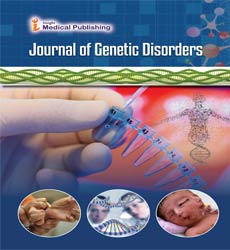Differential Diagnosis of Chlamydia psittaci and AIV H9N2 in Poultry of Pakistan
Abstract
Poultry includes chickens, ducks, turkeys, geese etc. and contributes 2.41% to the total GDP of Pakistan. Although poultry is the established and vibrant domain of livestock, but it is affected by various viral and bacterial infections. Avian influenza (AI) is highly infectious disease oriented by the strain A of influenza virus and is classified into low pathogenic (LPAIV) and highly pathogen (HPAIV) avian influenza viruses. Pathotype H9N2 is the LPAIV and infects the wide variety of warm blooded domesticated and wild birds including poultry and results in respiratory disorders and loss in egg production. Similarly, Avian chlamydiosis (AC) is caused by Chlamydia psittaci (C. psittaci) and effects psittacine birds, domesticated poultry, other avian hosts and mammalian species and also results in influenza like symptoms with acute respiratory distress. Viral-bacterial cooccurrence increase the disease intensity. Both AIV H9N2 and C. psittaci are known for their zoonotic importance. Their coinfection was observed and C. psittaci are known to enhance the AIV H9N2 infection by suppressing the host immunity. The present study is conducted on the poultry of Pakistan for the isolation and detection of AIV H9N2 and C. psittaci and to determine their co-occurrence. Total 550 samples of different poultry type were collected containing 491 tissue and swab samples, and 247 serum samples from the different areas. For the isolation from tissue and swabs, in-ova inoculation is used, and positive samples were subjected to hemagglutination (HA) and virus neutralization (VN) for the isolation of AIV H9N2 and further subjected towards conventional PCR and real time PCR for the detection of both AIV H9N2 and C. psittaci. The serum samples were checked for seroprevalence of AIV H9N2 and Chlamydia by ELISA. Positive sera samples were confirmed as H9N2 by hemagglutination inhibition (HI). It was observed that 184 samples show positive HA and 132 were confirmed as H9N2 by VN and 175 samples show seroconversion for H9N2. Maximum seroconversion was observed from commercial poultry of KPK in spring season. 148 samples were found positive for H9N2 by PCR and observed that maximum detections were from commercial poultry of Sindh in winter. Only 52 sera samples were found positive by ELISA for C. psittaci belonging to domesticated birds of Punjab in summer. Similarly, only 60 samples show C. psittaci detection by PCR mostly from domesticated poultry of Punjab in summers. Coinfection of both in 32 tissue and swabs, and 26 serum samples was also observed. It is also shown that PCR is more sensitive and specific as compared to in-ova inoculations. It is concluded that the chlamydial infection prevails in Pakistan alone and along with coinfection of H9N2 thus effecting poultry therefore, proper vaccination and preventive measures should be taken to stop their growth.
Open Access Journals
- Aquaculture & Veterinary Science
- Chemistry & Chemical Sciences
- Clinical Sciences
- Engineering
- General Science
- Genetics & Molecular Biology
- Health Care & Nursing
- Immunology & Microbiology
- Materials Science
- Mathematics & Physics
- Medical Sciences
- Neurology & Psychiatry
- Oncology & Cancer Science
- Pharmaceutical Sciences
